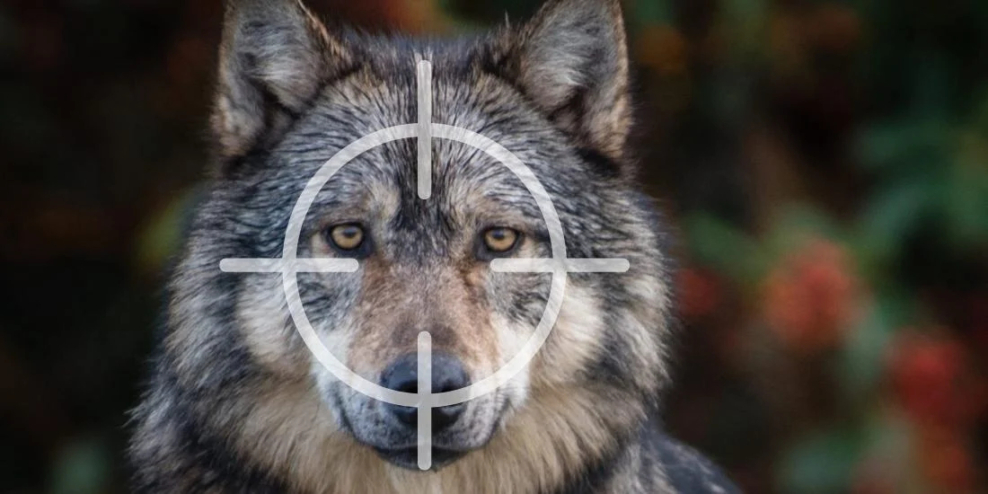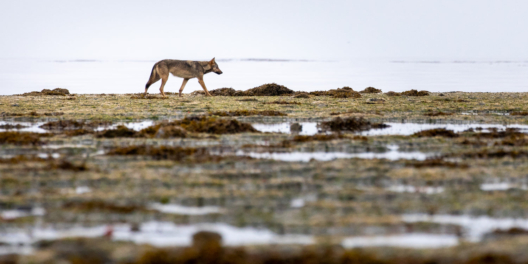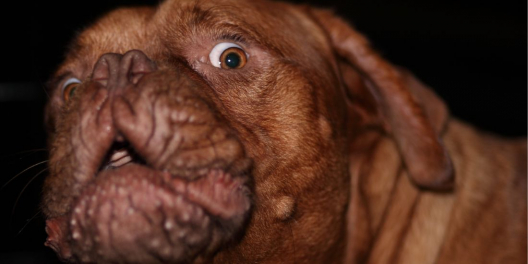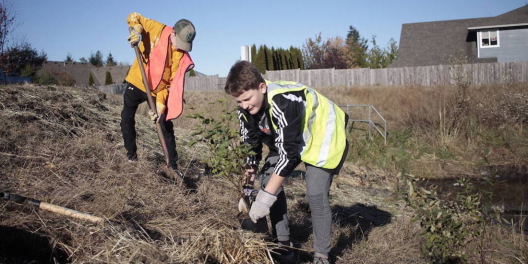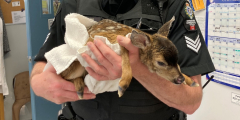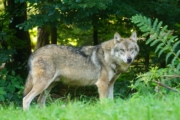Nature has an ancient way of keeping a balance between predator and prey. The health of one is always tied to the other. But in a world where people have changed everything, nature’s balance is thrown off.
Conservationists try to find actions to protect species. Sometimes that means telling people they need to avoid a particular area or activity. And sometimes, that means telling people to hunt and kill a certain animal.
But keeping nature’s balance is always hard when there are people involved. So conservationists have to ask themselves uncomfortable questions, like:
- What are people willing to give up to protect a species that isn’t doing so well?
- Is killing a predator to protect its prey the right thing to do?
These questions haunt the wildlife managers who are trying to protect mountain caribou on mainland BC.
Mountain caribou are a sub-population of woodland caribou that live high in the mountains. In the winter, they eat lichen that grows only in mature forests. But they’re listed as threatened by the federal Species at Risk Act.
They’re also one of the wolf’s favourite prey.
Experts estimate that there are only about 1,500 mountain caribou left in BC. That’s a huge drop from 2,500 in 1995. Decades of clear-cut logging, road building, mine development, and activities like snowmobiling have broken their habitat into pieces. We’re pushing them further up the mountains. There’s not much more room for them to go.
In BC, it’s government practice to sacrifice wolves to save mountain caribou–even though people are the main problem.
Humans have always had a strained relationship with wolves. Farmers see them as a threat and often shoot them to protect cattle and other livestock. Hunters think of them as competition—they’re constantly hunting the same prey.
But we also love wolves. They’re a part of our identity here on VanIsle. So when a trophy hunter shot and killed a beloved wolf pack near Sooke on the south island, people were rightly upset.
BC has a long history of killing wolves. Between 1910 and 1955, the BC government rewarded folks with cash in a fee-per-hide system for culling wolves. Then, throughout the 1950s and 60s, the government used planes to drop poisoned bait to kill them. The BC Society for the Prevention of Cruelty to Animals estimates over 1,400 wolves have been killed in BC since 2016.
The BC government claims that existing wolf populations in BC are healthy (somewhere between 5,300 and 11,600 individuals). With that many animals, the population could survive a cull. An estimated 350 live on VanIsle.
But it’s just an estimate. Predators are stealthy. Counting their numbers is incredibly hard and very expensive. So do we really know how many are here?
Mountain caribou need to be protected. No environment minister wants big, beautiful mammals like caribou to go extinct on their watch. And we can’t undo the mines or re-grow clear-cut forests soon enough to save them. That has put BC wolves in the crosshairs and wildlife managers in a tough spot.
The Roosevelt Elk is like the mountain caribou’s VanIsle cousin. These elk aren’t an endangered species. But wolves on VanIsle are still being singled out to be culled. Premier Horgan’s government just extended the wolf cull program until 2027.
Is this the right conservation move or a reckless idea that could endanger the wolves, too?
It’s tough to know.
